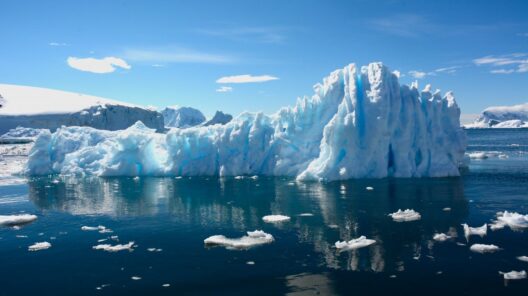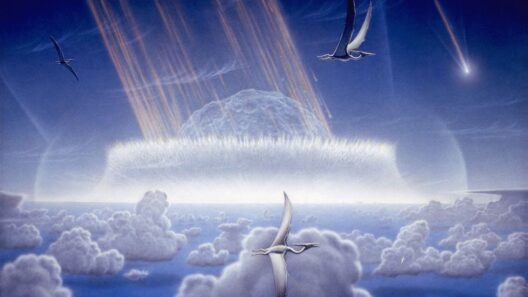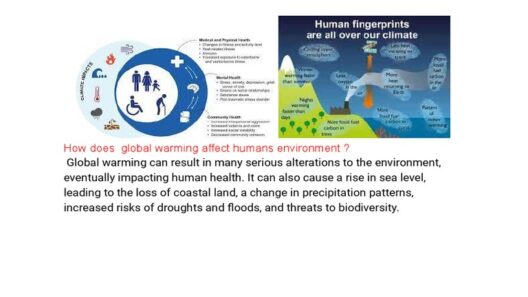As the Earth warms, ecosystems are plunged into a state of disarray—an intricate web of interdependencies trembling under the relentless rise in temperature. The very fabric of life is woven with delicate threads of balance; yet, this balance is increasingly disrupted, setting off a cascade of consequences that reverberate through the natural world. The metaphor of a symphony gone awry aptly encapsulates this phenomenon, wherein each note, representing a component of the ecosystem, begins to falter, leading to a dissonance that threatens the entire composition.
At the heart of these disruptions lies the phenomenon of rising temperatures. The average global temperature has warmed by approximately 1.2 degrees Celsius since the late 19th century, primarily due to human activities. This seemingly innocuous change is analogous to slowly boiling a frog; the shift is subtle yet devastatingly significant. Species that have flourished for millennia are now grappling with conditions that exceed their physiological thresholds. A slow march towards extinction looms over those that cannot adapt swiftly enough.
The consequences of rising temperatures are felt most acutely in vulnerable ecosystems, such as coral reefs, which serve as both habitat and nursery for myriad marine species. As water temperatures rise, coral polyps expel the symbiotic algae that provide them with energy and color, a phenomenon known as coral bleaching. This loss not only undermines the coral’s vitality but also disrupts the entire marine ecosystem that relies on these structures for shelter and sustenance. The pulse of life in the ocean slows, accentuating the urgency of the broader crisis.
Forests, too, stand as silent witnesses to rising temperatures. Forest ecosystems conduct a form of natural symphony, facilitating nutrient cycling and providing habitat for countless species. Yet, they are increasingly becoming susceptible to pests and diseases, which flourish in warmer climates. Bark beetles, for instance, have proliferated across North America, transforming lush forests into desolate landscapes, stark reminders of ecological upheaval. The loss of tree cover not only affects biodiversity but also exacerbates carbon emissions, as trees play a crucial role in sequestering carbon dioxide.
On land, grasslands and savannas are not exempt from the impacts of climate change. These biomes, often dismissed as mere expanses of vegetation, are in reality vibrant ecosystems supporting a plethora of species. As temperatures climb, alterations in precipitation patterns occur, leading to droughts that can devastate these regions. The delicate equilibrium of grasses, herbivores, and predators is increasingly threatened. An arid landscape devoid of its traditional flora and fauna transforms into a barren wasteland—a bleak visage of what once thrived.
The ripple effect of rising temperatures extends beyond immediate environmental changes; it manifests in socio-economic repercussions that affect human communities as well. As ecosystems falter, the services they provide become compromised. Clean water, fertile soil, and pollination of crops—all fundamental to human livelihoods—are imperiled. The phrase “ecosystem services” may evoke a sense of commodification, yet it belies the intrinsic value of these processes that sustain life. The interdependence between humans and nature is laid bare; their fates are inexorably linked.
Wildlife migration patterns are undergoing seismic shifts as species seek refuge in cooler climes. The blistering warmth drives desperate movements, leading to invasive species encroaching on new territories while native species struggle to maintain their foothold. The introduction of aliens into ecosystems not only displaces existing species but may also usher in new pathogens, further compromising biodiversity. Nature’s grand choreography is transforming into an erratic dance, threatening the biodiversity that once characterized these regions.
The oceans, once thought to be a boundless sanctuary, are not immune to the effects of rising temperatures. Ocean acidification—an insidious byproduct of increased carbon dioxide absorption—poses a profound threat to marine life. The delicate balance of pH in ocean waters becomes disrupted, which affects the ability of shellfish and coral to produce their calcium carbonate structures. Similarly, the occurrence of harmful algal blooms increases, creating dire consequences for marine ecosystems and human health alike.
In this context, conservation efforts must adapt to a changing climate. Traditional approaches may no longer suffice as species and habitats evolve under the exigencies of rising temperatures. Ecological strategies such as assisted migration, where species are relocated to more suitable habitats, are gaining traction. Maintaining genetic diversity will also be paramount, as heterogeneous populations are more resilient to the stresses of climate change.
Finally, at a societal level, the awareness and advocacy surrounding climate change must be amplified. Education serves as a linchpin in galvanizing collective action. Engaging communities in discussions about ecological stewardship fosters a sense of responsibility toward nature. Each individual can contribute, be it through reducing their carbon footprint, supporting sustainable practices, or participating in conservation initiatives.
As the Earth endures the shock of rising temperatures, the clarion call for action grows more urgent. The balance of ecosystems hangs in the balance, and our collective future is intertwined with their fate. Just as a symphony demands harmony, so too must we seek to restore balance within the intricate web of life. In the end, our ability to navigate this disruption will determine not only the resilience of ecosystems but also the legacy we leave for generations to come.







